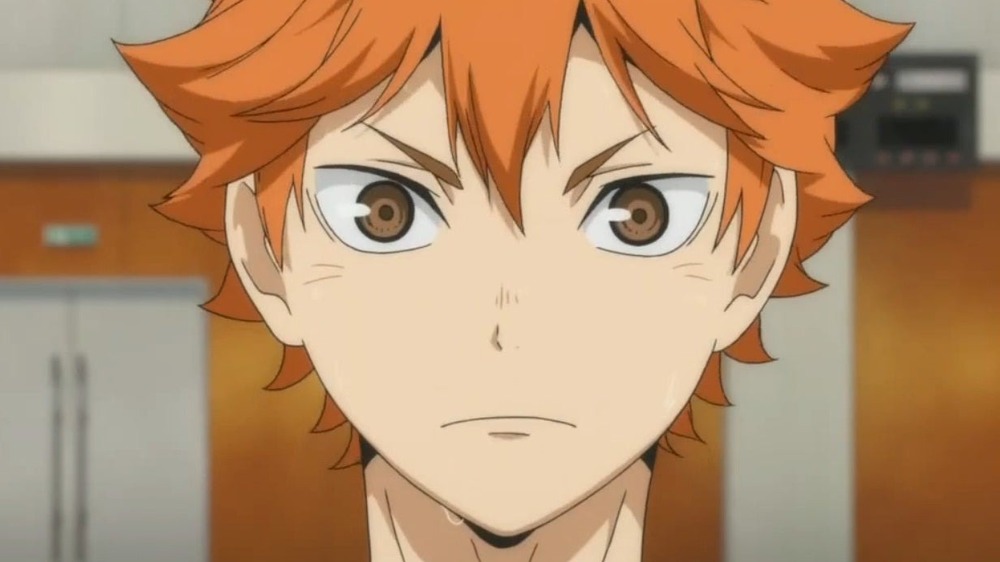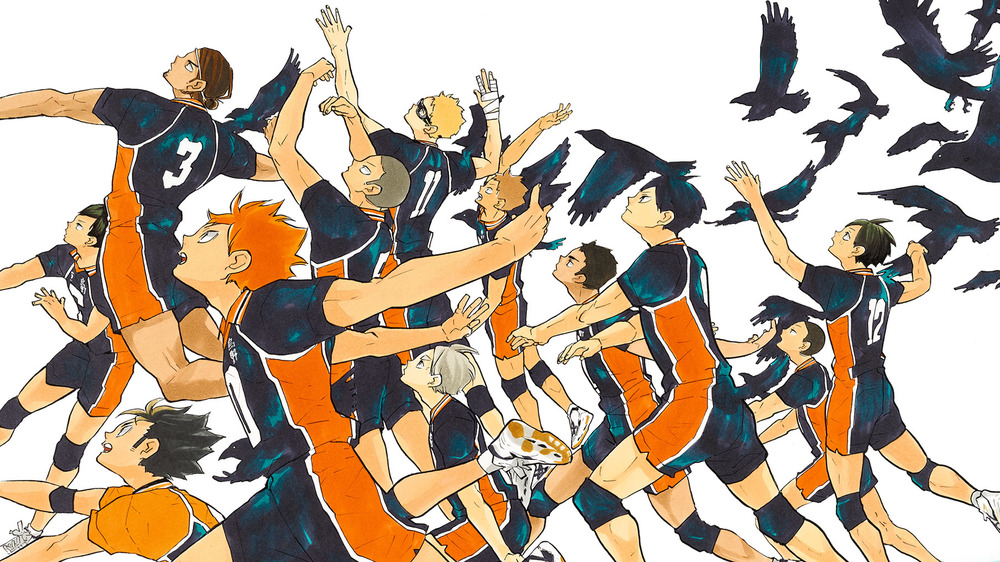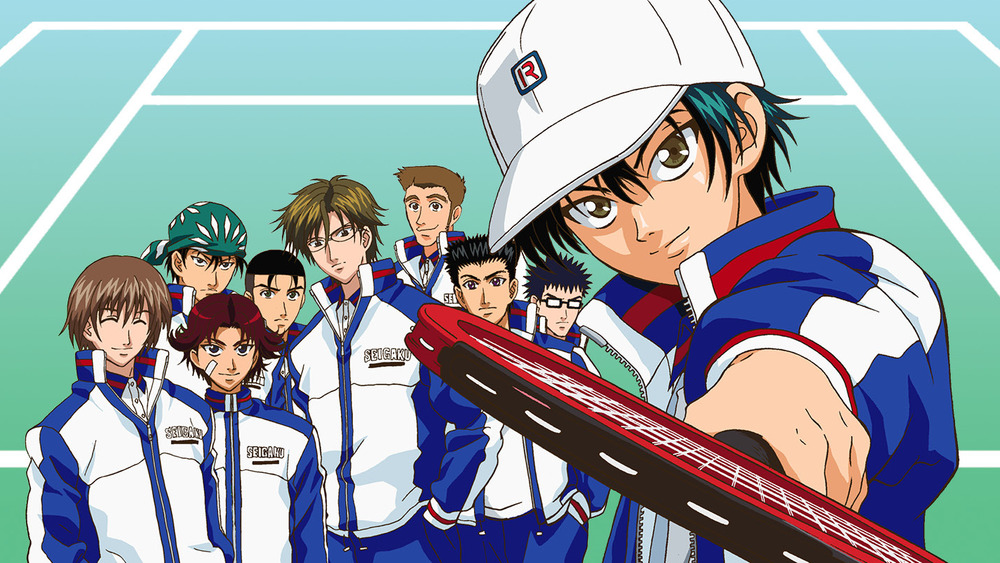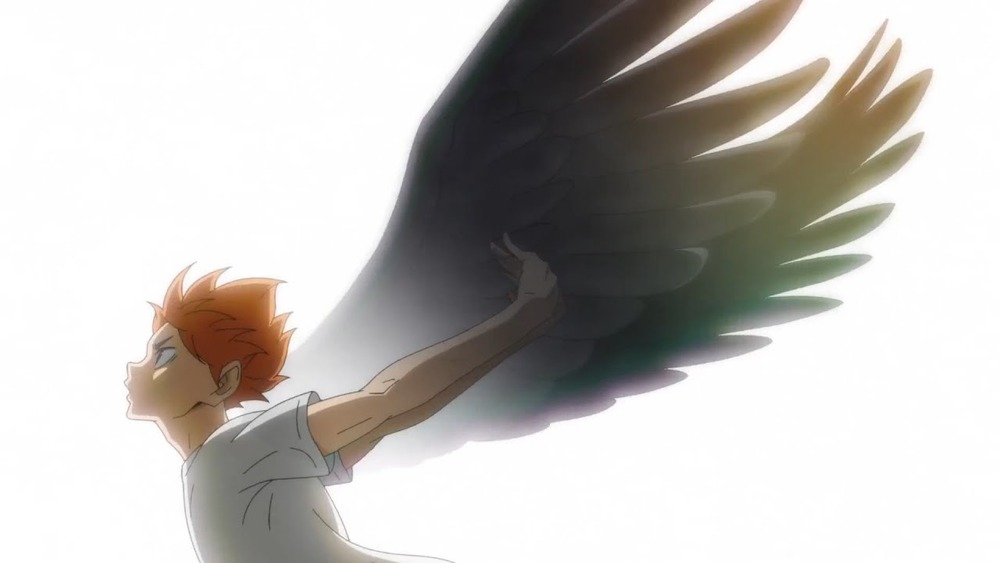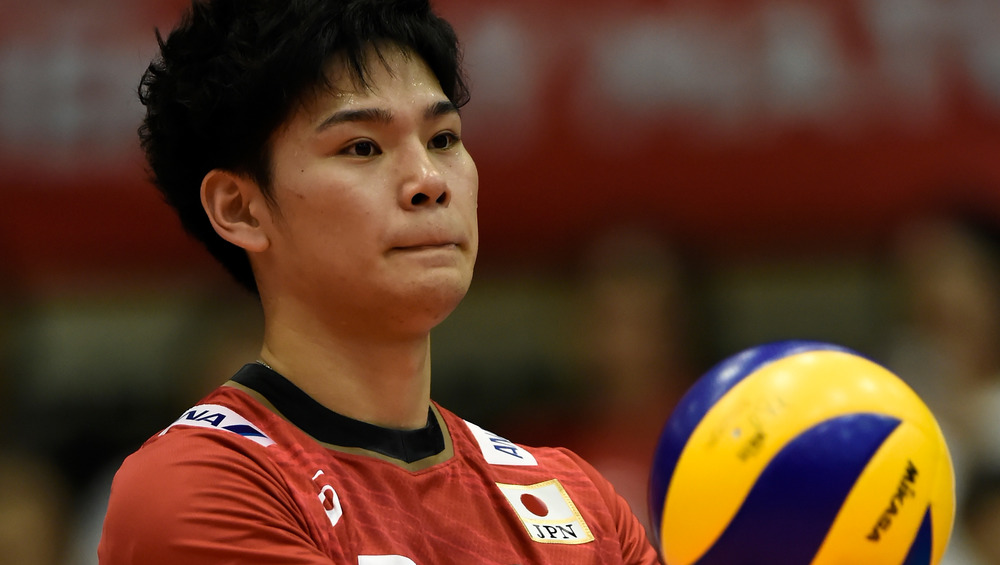How Realistic Is The Volleyball In Haikyuu?
Anime has a proclivity for stretching the boundary between reality and the fantastical. From exaggerated features to earth-shattering ninjutsus, anime is constantly playing with its audience's fantasies. Who wouldn't want to run and jump at breakneck speeds that defy the laws of gravity or throw shurikens with deadly accuracy? Shows like Naruto, One Piece, and Dragonball Z, the big three, help set the mythical tone for anime, creating alluring worlds that seem impossible and foreign yet relatable and emotionally rich. But Haikyuu, currently holding the title as the most popular sports anime, is an exception — and arguably one of the more realistic shows out there.
The story of Haikyuu starts with its vertically challenged hero Shoyo Hinata, a 5'4" volleyball fanatic who becomes obsessed with the sport after watching the "Little Giant," a famous high school player, dominate the court in a national tournament. The only problem is that his middle school doesn't have a volleyball team. But that doesn't stop Shoyo from pursuing his dream.
Shoyo Hinata is the ultimate sports anime underdog
Putting together a slipshod team of inexperienced players, Shoyo Hinata manages to secure a spot in the end-of-season middle school tournament. It is here where he first encounters his first rival, Tobio Kageyama, who has been aptly given the title "King of the Upper Court" due to his arrogant behavior and prodigal talents as a setter. Hinata loses the match to Kageyama's team, but his defeat only makes him more determined to become a truly formidable player despite his height.
Yet upon entering high school, the very same one that the "Little Giant" attended, Hinata discovers that his new rival is actually his new teammate. Despite the great potential of Karasuno's newest players, their volleyball club is far from perfect: Former players have sworn off volleyball for good, there isn't a head coach, and tensions rise, as Hinata and Kageyama's rivalry often results in missed spikes and petty fights. But by virtue of sheer willpower, Karasuno finds its groove, becoming a dark horse team ready to shock Japan's volleyball world.
With thousands of manga and anime writers, the range of exaggeration is quite large
Kuroko no Basuke, a well-liked series about a budding high school basketball team, is widely regarded as one of the most unrealistic sports anime. Mere high school students are granted abilities that surpass that of even Dr. J or Michael Jordan, sinking full-court shots or pulling off triple windmill dunks with ease. Meanwhile, Prince of Tennis might be the king of exaggeration, with the show's characters generating fire tornados from the friction of their tennis rackets or flying thousands of feet in the air like Superman during a volley.
Even though Haikyuu pushes the boundaries of what's possible on a volleyball court, especially from high schoolers, the show does not have the same flair for exaggeration as its anime kin. In fact, this might be due to the fact that its creator, Haruichi Furudate, an ex-volleyball player and fan, possesses a more nuanced understanding of sport and its mechanics.
So, how realistic is Haikyuu?
According to Quora user Avery Tran, "the majority of the show is pretty realistic. Some things like physical ability are exaggerated for the sake of making the show entertaining — but the thing is, those exaggerations do happen in real life, it's just uncommon." When Shoyo Hinata's vertical leap was calculated, it was found that he could jump 48 inches, which would put him alongside the world's top-tier athletes. Uncommon, indeed! It's hard to believe that a mere 14-year-old could achieve such impressive physical feats. In fact, the anime often reveals itself to be aware of its own exaggerations. When crowds and players first witness Hinata's absurd jumping power, the common reaction is of utter disbelief.
Tran, as well as many other fans, also finds "the time it takes for the characters to go between plays" to be quite unrealistic. "It's pretty much slow motion," he remarked, "and characters have an interval of time where they can think and plan their next attack. But in reality, a volleyball play can go by in less than five seconds, barely enough time to think clearly."
Japan's star player, Yuji Nishida, is a 'huge fan' of Haikyuu
Although Haikyuu does exaggerate the abilities of its characters, it does brilliantly capture many aspects of real-life sports teams: the sense of brotherhood shared between players, the storm of feelings that accompany high-stakes matches, the mental fortitude and drive required to be the best of the best. Even pro volleyball player Yuji Nishida, dubbed "Hinata in Real Life," related to many moments in the show, calling it his "favorite anime." "I'm often trusted to score a point," he shared in an interview with Weekly Shonen Jump (via ComicBook.com), "and I always jump while keeping my teammates and their thoughts in my mind. There's so many scenes in Haikyuu that I can [empathize] with as a spiker."
The fact that Haikyuu can appeal to someone like Yuji Nishida is a testament to its story and characters — and while there are many reasons to love Haikyuu, perhaps its greatest strength is the message it imparts to its fans: As long as you have friends, anything is possible.
